Opened 10 years ago
Closed 9 years ago
#457 closed enhancement (fixed)
Introduce wave optics propagator tool (WOPT)
| Reported by: | cburrows | Owned by: | cburrows |
|---|---|---|---|
| Priority: | major | Milestone: | 9.0 |
| Component: | ropp_pp | Version: | 8.0 |
| Keywords: | Cc: | Ian Culverwell, sti, cburrows |
Description
This branch includes the developments of a wave optics propagator that is intended to become part of the ropp_pp module. This takes a vertical refractivity profile as input and simulates the phase and amplitude values that such an atmosphere would produce for a fixed GNSS and a LEO in a circular orbit.
Attachments (21)
Change history (47)
comment:1 by , 9 years ago
comment:2 by , 9 years ago
comment:3 by , 9 years ago
I meant the differences grow rapidly after dim_lev1a ~ 14500. They're very small (1e-5 m in phase, 1e-7 V/V in SMR) until then.
comment:4 by , 9 years ago
Oddly, for CASE 12 (a more difficult one), we don't see anything like the same difference in excess phase

although the difference in SNR is similar to CASE_07:

comment:6 by , 9 years ago
by , 9 years ago
| Attachment: | it_wopt_02_CASE_07_nsmooth=8.jpg added |
|---|
it_wopt_02_CASE_07_nsmooth=8.jpg
by , 9 years ago
| Attachment: | CASE_07_excess_phase_diff_nsmooth=8.png added |
|---|
CASE_07_excess_phase_diff_nsmooth=8.png
comment:7 by , 9 years ago
A bit more sensitivity came to light when testing CASE12 (a difficult one). When I use
IF (ABS(U(i)) > 1.0E-5*Amp_max)
in ropp_pp_wopt_propagate_to_leo.f90 and propagate through WOPT and then OCC, the resulting refracs look bas cf: the input ones:
 When I reduce this threshold, which allows more points to contribute to the signal at the LEO, to
When I reduce this threshold, which allows more points to contribute to the signal at the LEO, to
IF (ABS(U(i)) > 1.0E-6*Amp_max)
then the fit is closer:
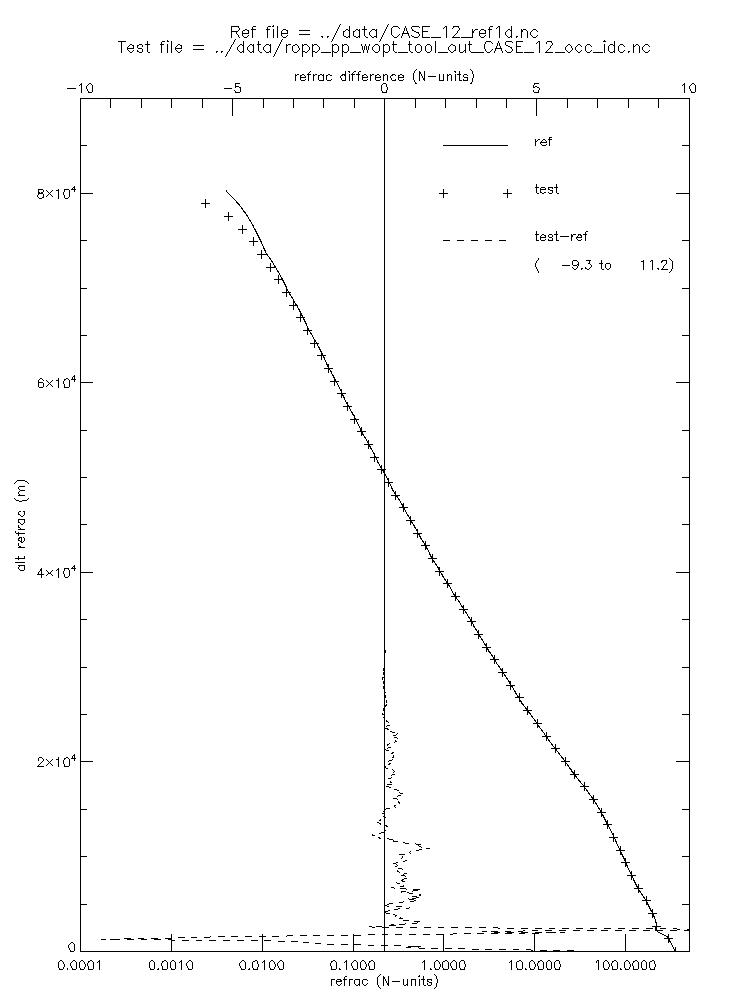 This looks better, and is closer to wnat I got with Sean's original code (with 1.e-5, however):
This looks better, and is closer to wnat I got with Sean's original code (with 1.e-5, however):
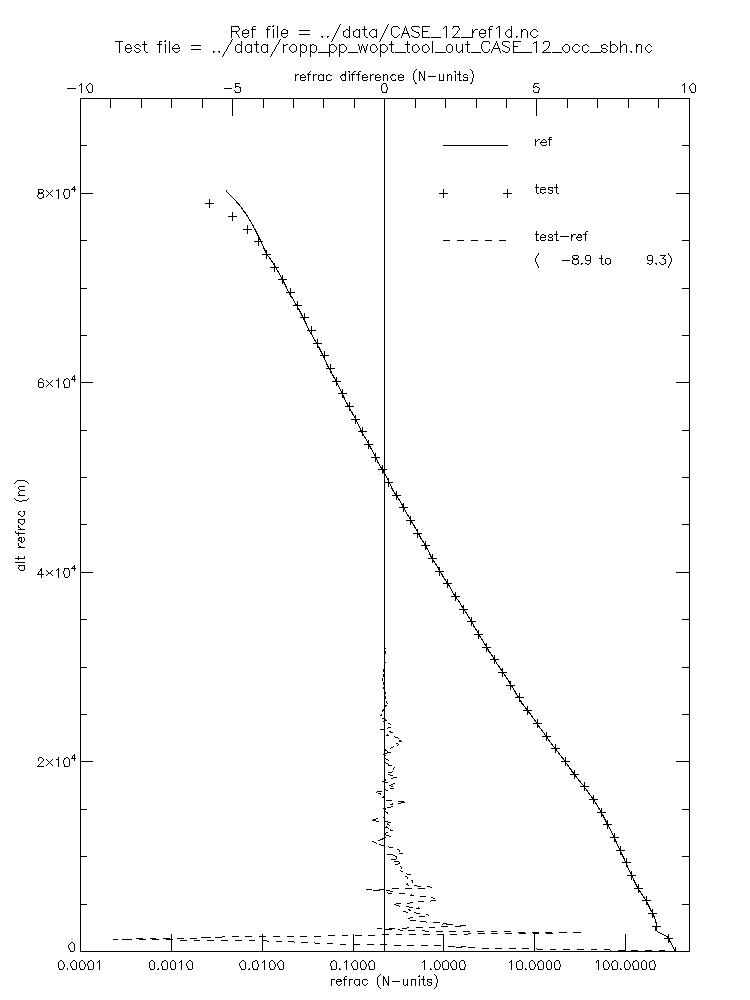
by , 9 years ago
| Attachment: | ropp_pp_comp_CASE_12_idc_1.0E-5.jpg added |
|---|
ropp_pp_comp_CASE_12_idc_1.0E-5.jpg
by , 9 years ago
| Attachment: | ropp_pp_comp_CASE_12_idc_1.0E-6.jpg added |
|---|
ropp_pp_comp_CASE_12_idc_1.0E-6.jpg
by , 9 years ago
| Attachment: | ropp_pp_wopt_tool_out_CASE_12_occ_idc.out-ropp_pp_wopt_tool_out_CASE_12_occ_sbh.out.png added |
|---|
ropp_pp_wopt_tool_out_CASE_12_occ_idc.out-ropp_pp_wopt_tool_out_CASE_12_occ_sbh.out.png
comment:8 by , 9 years ago
comment:9 by , 9 years ago
Note in particular the failure of the Global MSIS search for Sean's data. (Of course, iono corrn should have no effect as there's no ionosphere in this problem: phase_L1 = phase_L2.)
comment:10 by , 9 years ago
Note that if I revert my code to use Sean's parameters, namely:
real(wp) :: f_L1, c_light, pi1, radius_earth f_L1 = 1.57542e9_wp c_light = 3.0e8_wp pi1 = 3.141592653589793238_wp radius_earth = 6.378135e6_wp radius_gps = 2.66e7 theta_min = 0.451953697_wp theta_dot = 1.036e-3_wp REAL(wp), PARAMETER :: amplitude_cutoff = 1.0E-5_wp
then I get very similar results to Sean:
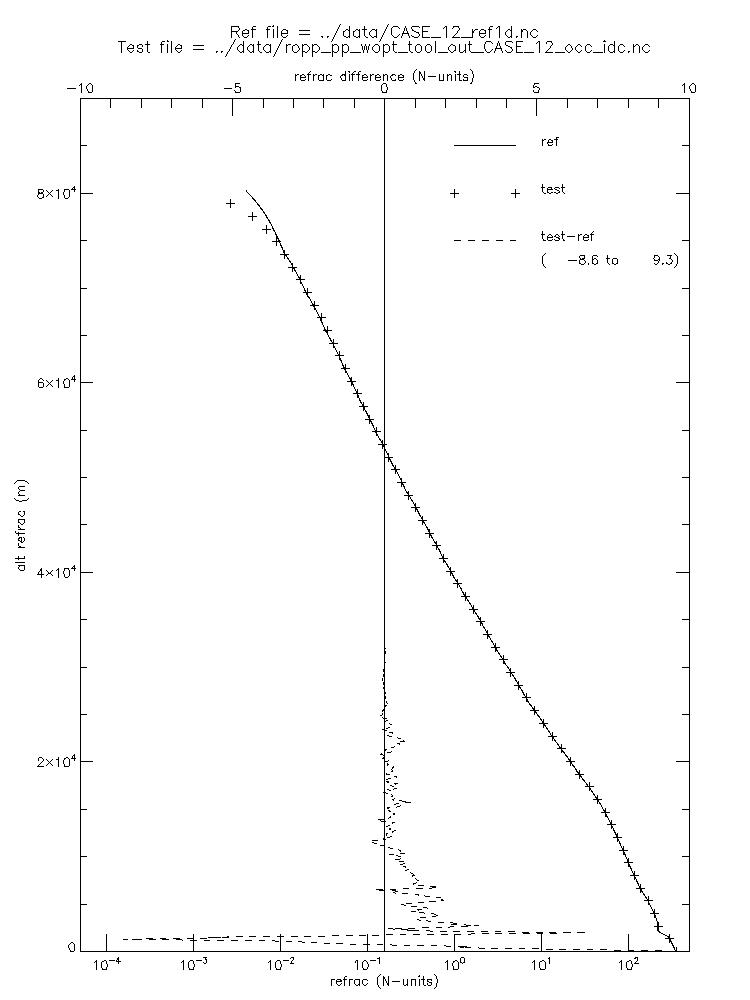
And the occ processing is also very similar:
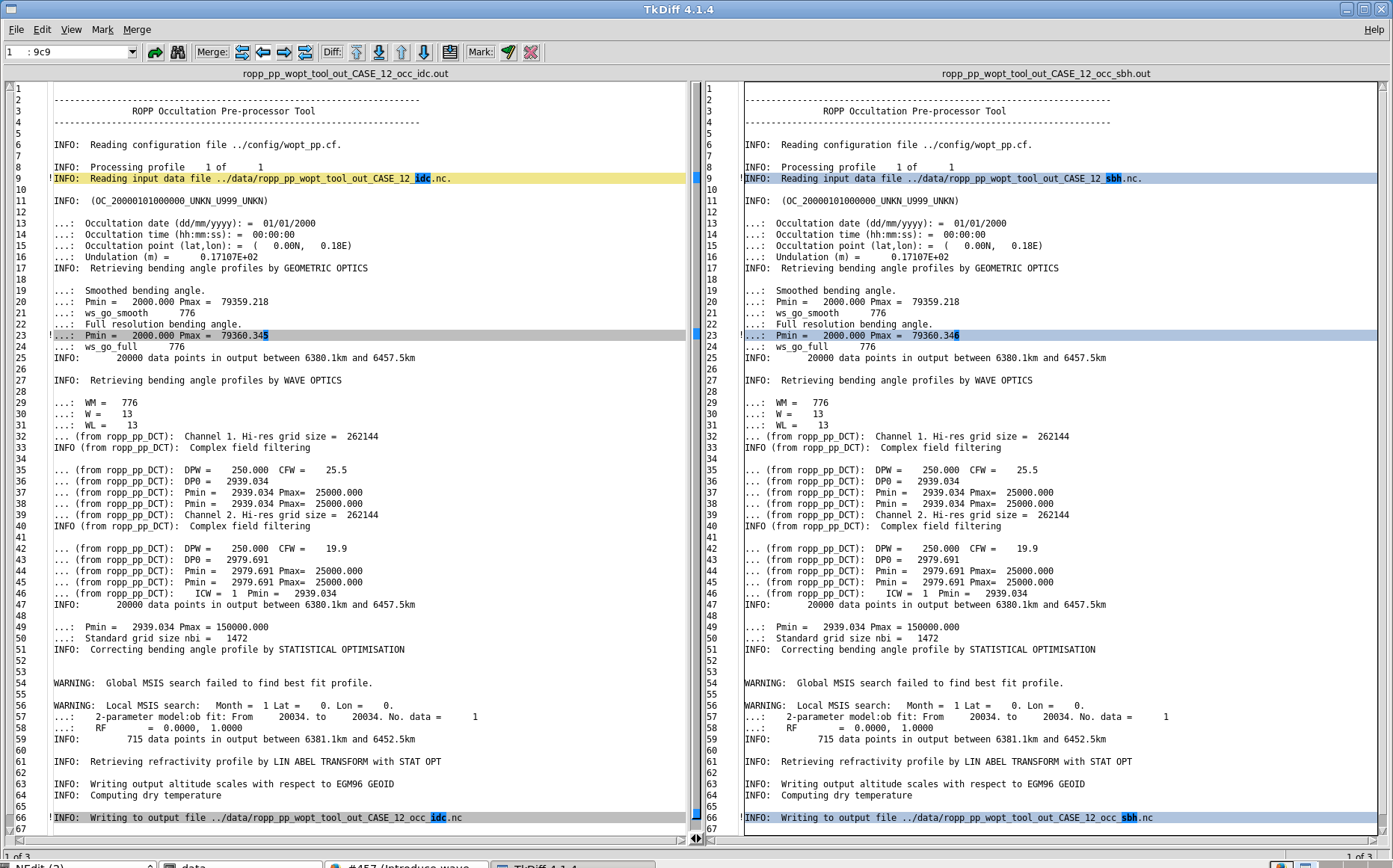
So I evidently haven't introduced any errors in my translation of the code: the differences in these parameters are deliberate (mainly done to match the values used in the ROPP OCC code).
The difference in the OCC processing probably accounts for the difference in the retrieved refracs, and I think we can just say that in this case Sean's happened to give a closer fit to the input refracs than mine.
by , 9 years ago
| Attachment: | ropp_pp_comp_CASE_12_idc_1.0E-5_SBH_params.jpg added |
|---|
ropp_pp_comp_CASE_12_idc_1.0E-5_SBH_params.jpg
by , 9 years ago
| Attachment: | ropp_pp_wopt_tool_out_CASE_12_occ_idc_SBH_params.out-ropp_pp_wopt_tool_out_CASE_12_occ_sbh.out.png added |
|---|
ropp_pp_wopt_tool_out_CASE_12_occ_idc_SBH_params.out-ropp_pp_wopt_tool_out_CASE_12_occ_sbh.out.png
comment:11 by , 9 years ago
Summary
- The new code matches the original pretty closely - no apparent errors
- This is true even on very challenging cases such as CASE 12
- There are good grounds for setting
amplitude_cutoff = 1.0E-6_wp
comment:12 by , 9 years ago
Commit various aspects of these changes (to https://trac.romsaf.org/ropp/browser/ropp_src/branches/dev/Share/cb_wopt_test):
comment:13 by , 9 years ago
The tolerance on |difference in phase_L2_1| in ropp_io_fields_compare.f90 has been loosened (to match that of phase_L1) at r4990.
A fix to prevent calculation of ATAN2(0, 0) in ropp_pp_wopt_phase_and_amplitude.f90 has been made at r4991.
A cosmetic change ymax --> ylimit has been made to the WOPT tool at r4992.
comment:16 by , 9 years ago
Chris and Sean squashed some of the bugs in this while I was away.
- Update ropp_io/data/eum_test_l.bfr_ref (as a result of IP precision (r4987) and software_version changes (r4997) at r5023.
- Include higher precision Fresnel integral estimates at r5024.
- Zero the 'edge' contribution to the 'linear' part of the integral giving the signal at the LEO at r5026 and r5028. (Not doing so is equivalent to assuming a linear variation in phase and amplitude out to 'infinity' (1E20 in practice). Omitting the edge contribution is equivalent to using a flat extrapolation. Keeping it in reveals a strange and nasty compiler sensitivity.)
comment:17 by , 9 years ago
ROPP9.0_beta, which contains these latest changes, has been tagged at r5039.
comment:18 by , 9 years ago
Thought for future developments.
- Why not do a cubic spline fit over each of the mini-screens in
ropp_pp_wopt_propagate_to_leo.f90? The relevant integrals involve exponentials and Fresnel integrals, so the hard work has already been done. This might reduce the sensitivity tonsample(and the compiler!) because the 1st and 2nd derivatives of phase and amplitude would then be guaranteed to be continuous across the 'sample' boundaries.
comment:19 by , 9 years ago
Actually a cubic spline might be a step too far: we would end up with integrals involving exp(i(1+x+x2+x3)), which is a bit involved. But quadratic splines (C1 piecewise quadratics) might be possible. They would involve integrals of quadratic*exp(i*quadratic), and they're not too hard.
But in fact a better method might be some sort of least squares fit which was nonetheless cts across the 'sample' boundaries. Can we do some sort of constrained least squares optimisation?
comment:20 by , 9 years ago
CASE_05_ref1d.nc and CASE_51_ref1d.nc have been added to the repository at r5055. ROPP now includes the following examples:
CASE_51 = cat 1 CASE_07 = cat 2 CASE_12 = cat 3 CASE_05 = cat 4
For the definitions of the various categories, see the attached wop_studyv5.pdf. Basically, the higher the cat, the higher the maximum refractivity gradient.
Sean has passed all 55 profiles through his version of the WOPT; the results are plotted in the attached wopt55.pdf.
comment:21 by , 9 years ago
Sean's 'quick FSI' code has been plumbed in to ROPP at r5057. It is invoked by calling ropp_pp_wopt_tool with the -f option.
comment:22 by , 9 years ago
comment:23 by , 9 years ago
| Resolution: | → fixed |
|---|---|
| Status: | new → closed |
A new test has been produced in the Test Folder for this new functionality: IT-PP-06 (note that the previous test 'IT-PP-06' has been renamed 'IT-APPS-01' to reflect the addition of the new 'ropp_apps' module).
The test runs the WOPT on a series of 1D refractivity profiles from the 55-profile dataset to produce simulated phases/amplitudes. The new FSI tool then retrieves bending angles from these, and the existing 'invert' tool produces refractivities which are compared against the original profiles. The comparisons are within acceptable bounds.
Closing ticket.
comment:24 by , 9 years ago
| Resolution: | fixed |
|---|---|
| Status: | closed → reopened |
comment:25 by , 9 years ago
I wondered if a continuous piecewise linear fit of the signal on the final screen might generate better results. It doesn't. See the attached Continuous_LSQfit.pdf for details. So abandon.
For the record, in case the idea proves useful elsewhere, the code to do this is contained within the attached ropp_pp/wopt/ropp_pp_wopt_propagate_to_leo.f90.
by , 9 years ago
| Attachment: | ropp_pp_wopt_propagate_to_leo.f90 added |
|---|
ropp_pp_wopt_propagate_to_leo.f90


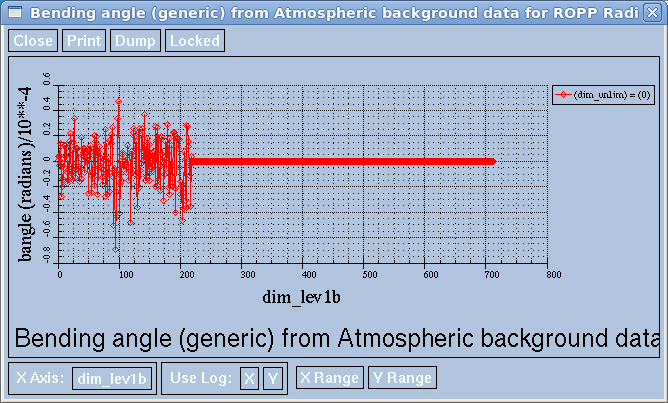



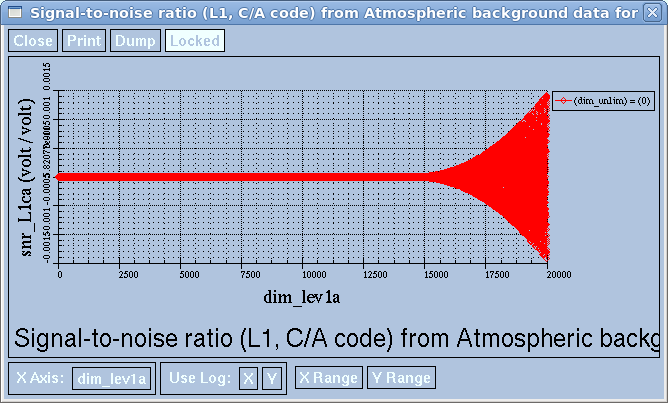
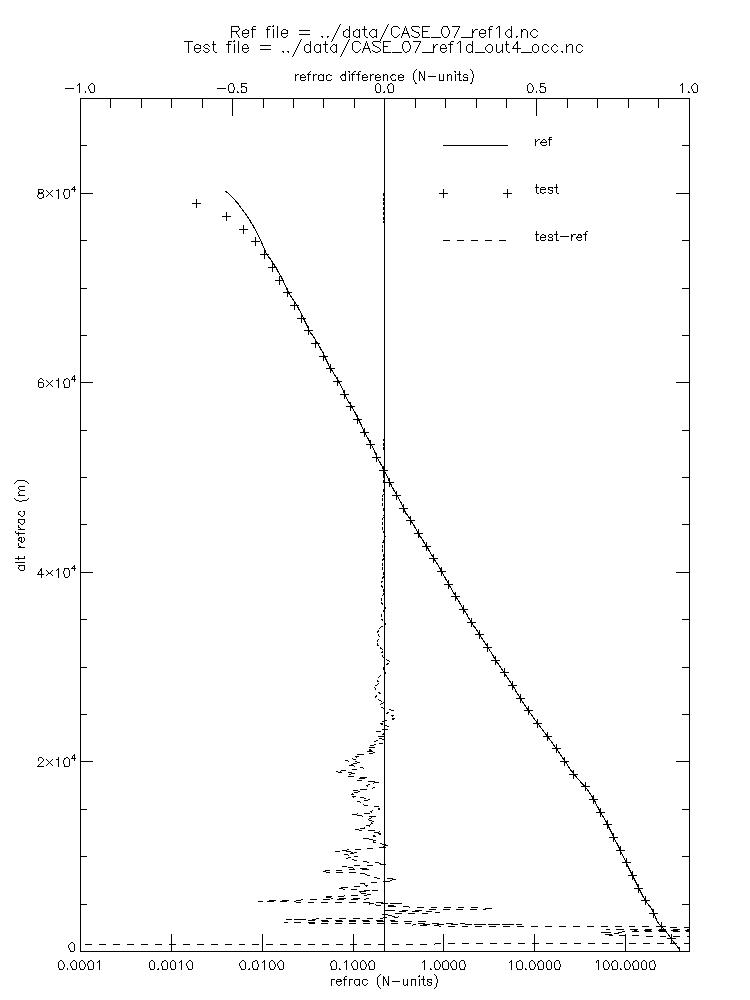
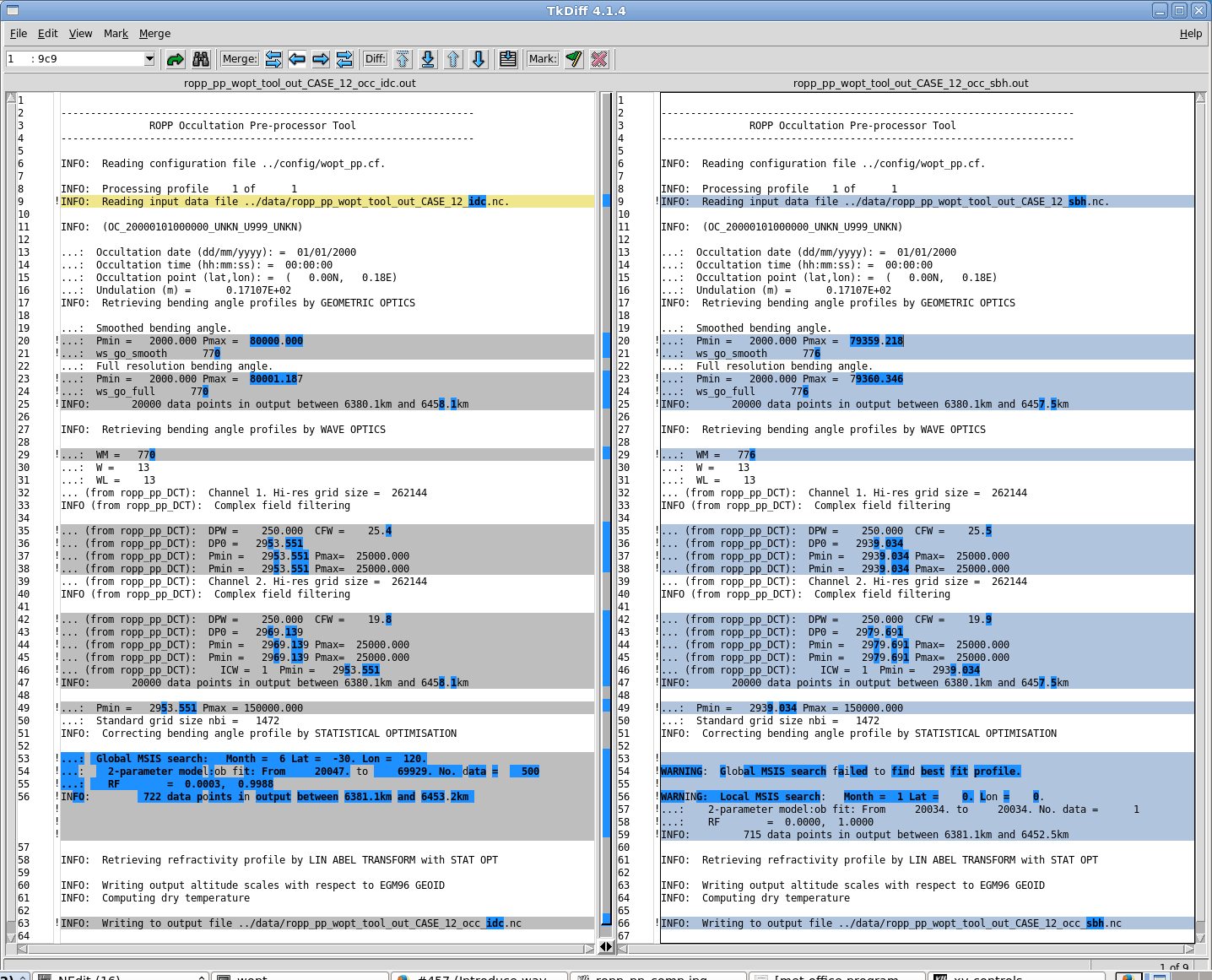
This has been ROPPified. In doing so, I noticed a crazy sensitivity, which is worth recording before things are overwritten.
The command
generates this excess phase
and this SNR:
Both of these look reasonably sensible.
But simply changing
to
in ropp_pp_wopt_tool.f90 (ie just promoting the GNSS altitude 2.66e7 m from single precision to double precision) generates excess phases that differ from the above by this much:
This is crazy: about 500 m difference when the phase is 10 000 m, ie about 5% difference in excess phase.
The SNRs differ from the single precision result by this much:
At the end of the (setting) occultation, this is around 0.001 in 0.01, ie ~ 10%.
This seems a very large 'structural uncertainty'. The differences grow rapidly until dim_lev1a ~ 14500, towards the end of the (setting) occultation, so perhaps it occurs when
s_geom= |r_GPS - r_LEO| exceeds some threshold.